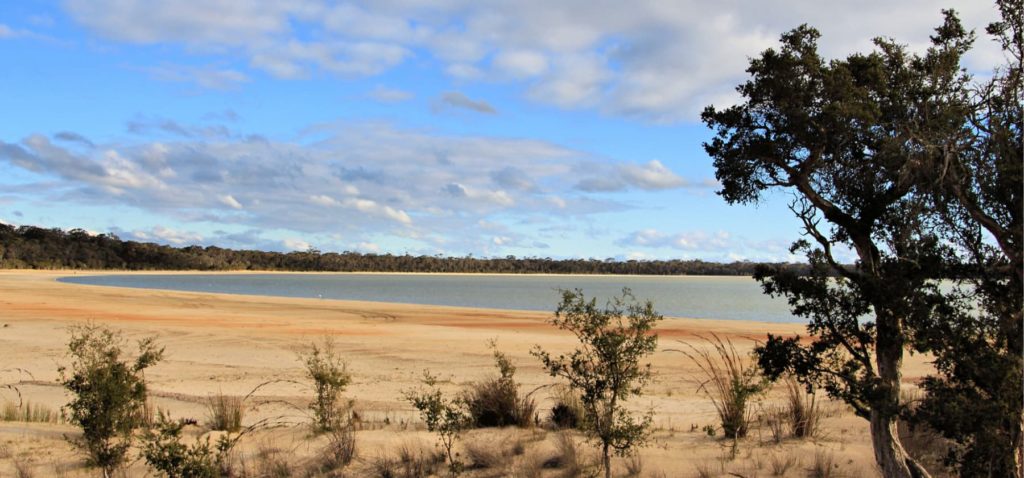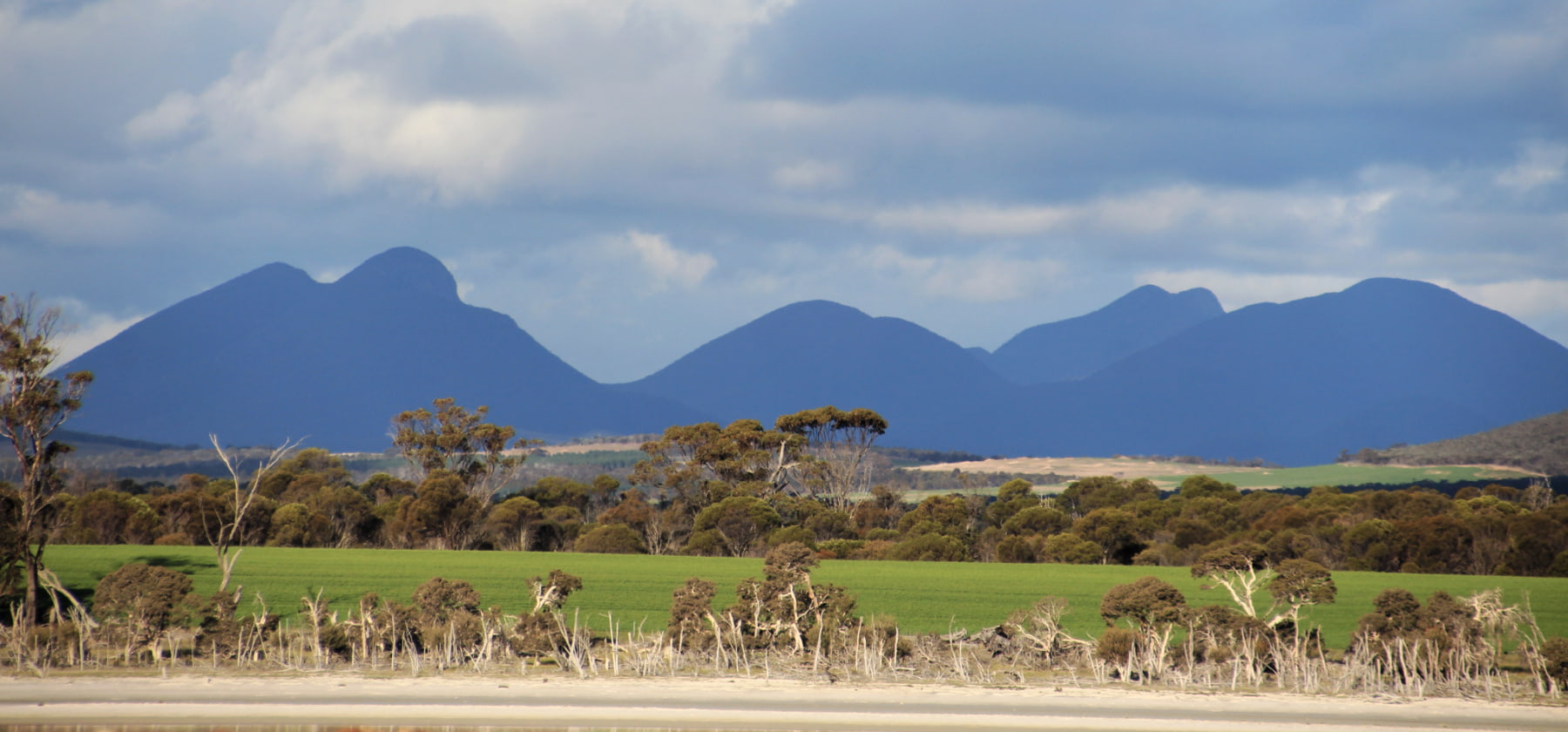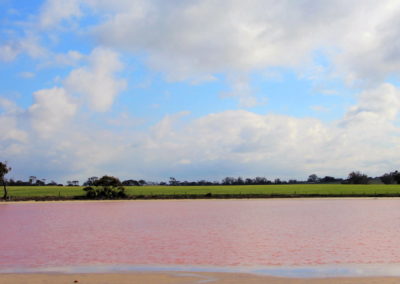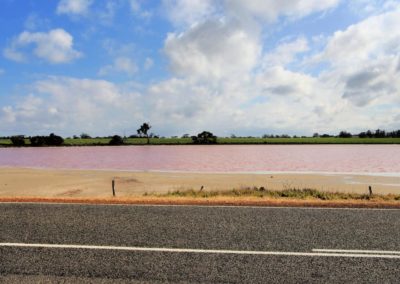
Overview
Cranbrook’s Pink Lake is one of a chain of salt lakes north of the Stirling Ranges that sit along the path of an ancient waterway. Tens of millions of years of rainfall has filled the large river valleys with sediment, leaving these shallow basins behind to form the string of salt lakes. While harder to spot from the ground, the path of the ancient river is easy to see from satellite images.
These lakes are naturally salty – a contrast to the wetlands of the Upper Kent catchment like Nunijup and Poorrarecup, which were once fresh and have become salinized through the removal of original vegetation and the rising watertable bringing salt to the surface.
The Great Southern Highway takes you right past this lake which is on private land. There is no safe place to stop on this busy road, so please just admire as you drive past.

Story of the place
Watch
Birds on the Edge
Credit: Green Skills
Salt Lakes of Cranbrook
Credit: Gan Eden Media
Why are the lakes pink?
Many of the lakes in this area will be different shades of pink throughout the year. This colour arises from an interaction between an algae Dunaliella salina, and a single-celled Halobacteria, both of which can thrive in the shallow saline systems.
The algae Dunaliella salina is the most salt tolerant of algal species, able to grow in extremely hyper-saline conditions. When conditions become extremely harsh – with increased salinity, temperature and light – the algae accumulates the reddish pigment beta-carotene, which protects the algae from too much light by coating the green chlorophyll. The normally green Dunaliella salina becomes red, making the water around it look pink.
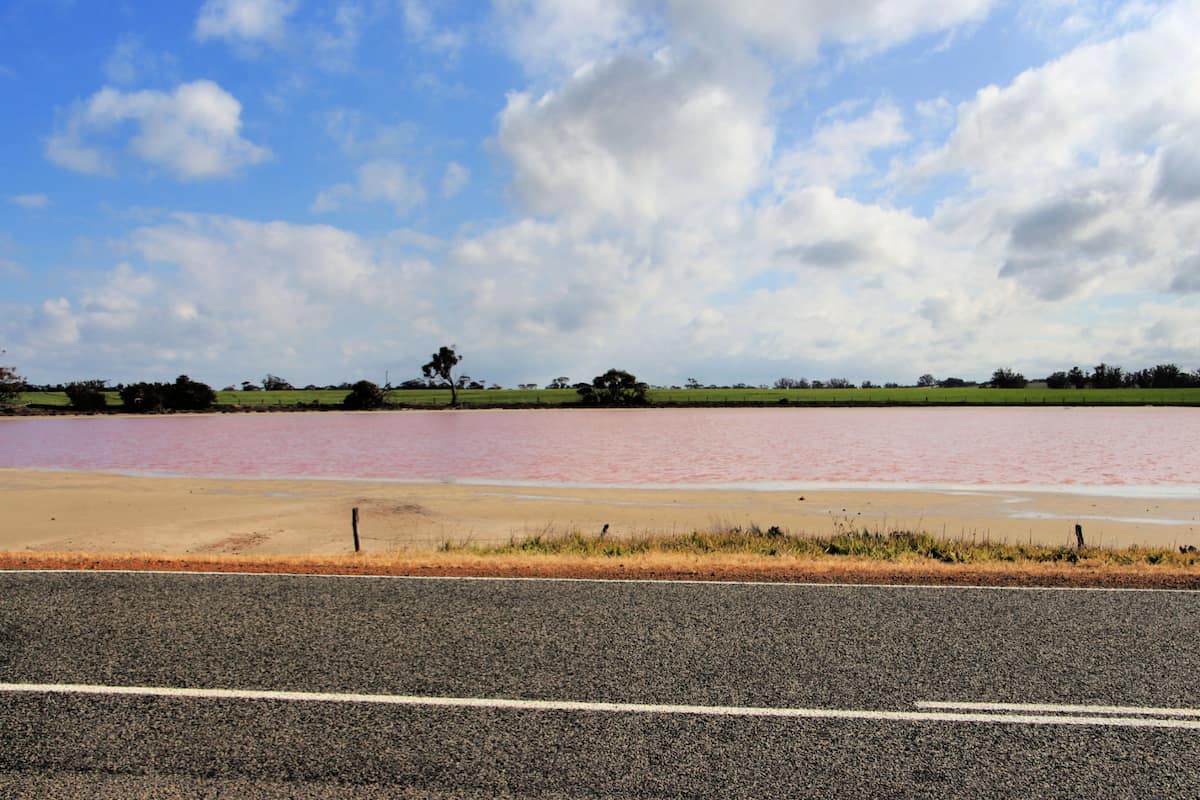
The single-celled organism Halobacterium cutirubrum is also present in hyper-saline salt lakes, growing within the salt crust on the bottom of the lake. It too is pink in colour, enhancing the pink hues of the salt lakes.
The exact colour of the lake will depend on the balance between Dunaliella salina and Halobacterium cutirubrum. Because there is a direct influence from salt concentration and temperature, when water levels are low and temperatures high in late summer the lakes will likely be most pink.
Salt lake country
Nearby salt lakes are coloured in a range of hues – an outcome of differing sediments, the presence of different aquatic and terrestrial plants, the chemistry of the water, presence of algae like the Dunaliella salina, and hydrology.
Many of these saltwater lakes in the area are ephemeral – drying out regularly. Despite these very tough conditions, there are a range of salt-loving aquatic invertebrates, such as brine shrimp, that can handle the hyper-saline conditions and the temporary absence of water.
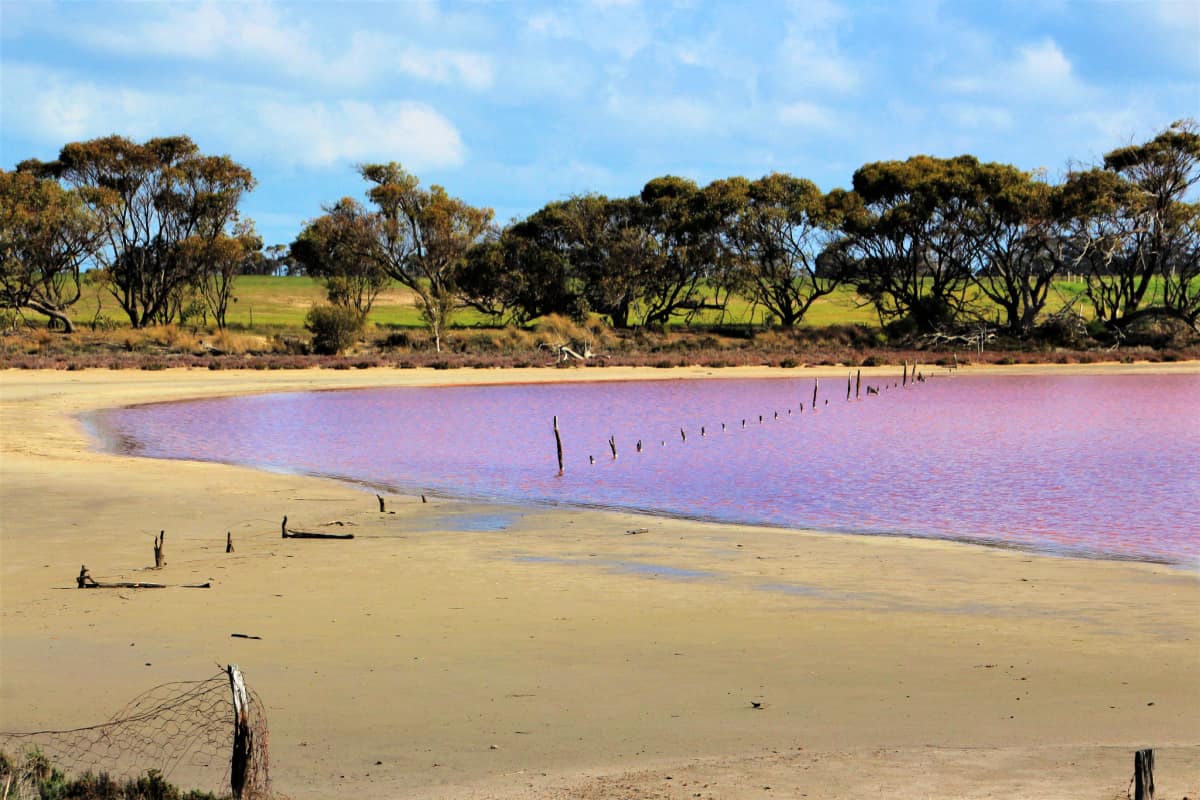
Like all the lakes in the wheatbelt, levels have changed over time, with the rising saline watertable. The fence through the southern edge of this Pink Lake is an indication that the lake was once much smaller, or at least dried out far more frequently, and has become larger with the rising watertable.

See & Do
Giving back and getting involved
Two community-based organisations play an important role in protecting and restoring wetlands and other important areas in this area.
The Gillamii Centre is the long standing landcare group based in Cranbrook and working with the farming community and others on a wide range of sustainable practices.
Green Skills is based in Denmark and is a leading group in achieving the Forest to Stirlings section of the Gondwana Link.
Contact them directly to donate to their wonderful work or to get involved in citizen science investigations and ecological restoration activities.
Nearby
There are many other sites to visit nearby including:
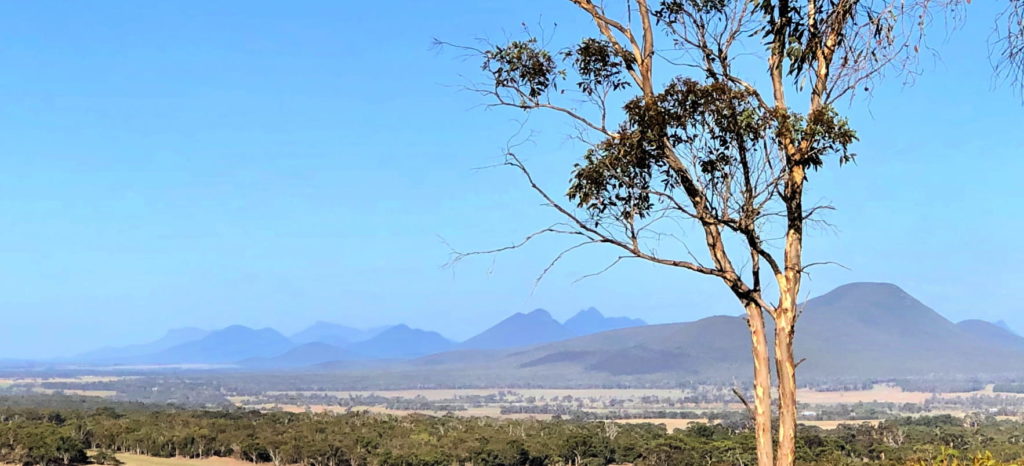
Sukey Hill lookout
From Sukey Hill you’ll find a spectacular view of the western end of Koi-Kyeunu-ruff (or the Stirling Ranges). But the hill itself is actually a remnant of the original, ancient mountain range.

Cranbrook Wildflower Walk
Take this 1.7km walk through predominantly wandoo woodland in spring and be rewarded by many beautiful flowers and a number of spectacular orchids.
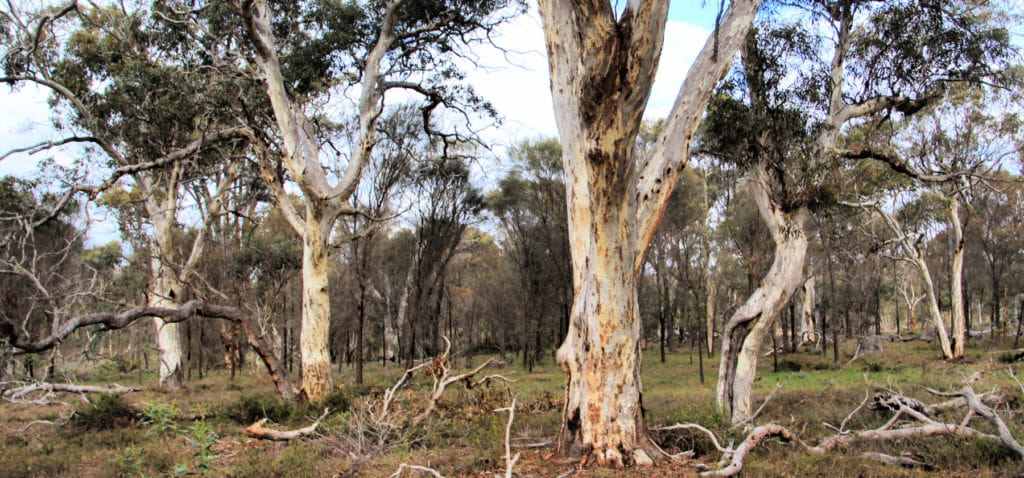
Twonkup
Known to the Noongar community as Dwangup, this is a very significant cultural site and a registered Aboriginal heritage site.

Practical Information
Directions
The Pink Lake is on the Great Southern Highway, just 15km north of Cranbrook.
When to go
In late summer the lake is likely to be the most pink.
Closest towns
Cranbrook – 15 km via Great Southern Highway.
Where to eat and stay
See the suggestions from our friends at Great Southern Treasures:
Visitor Information
Shire of Cranbrook
19 Gathorne Street
(08) 9826 1008
Website

